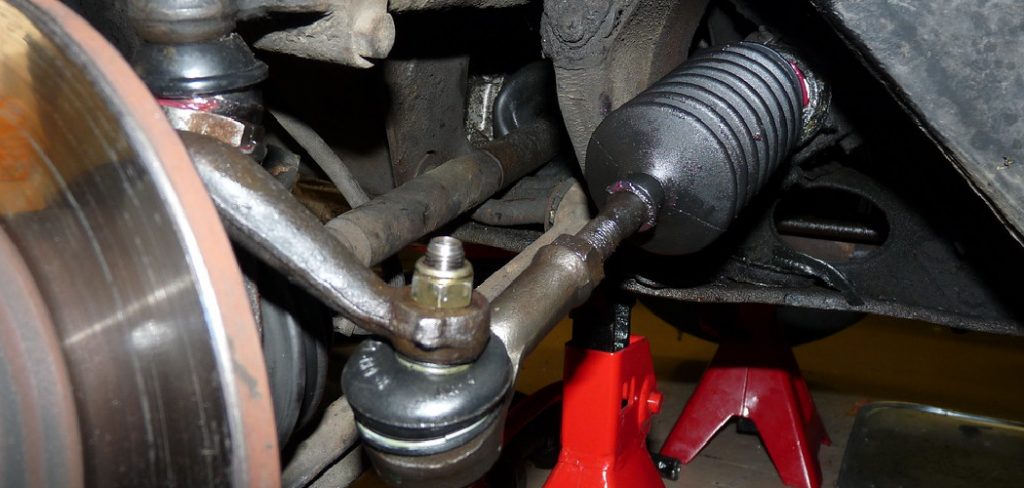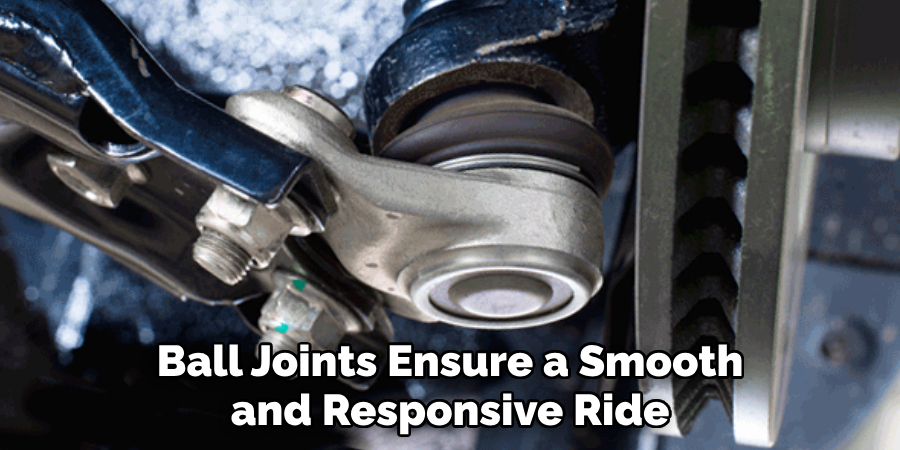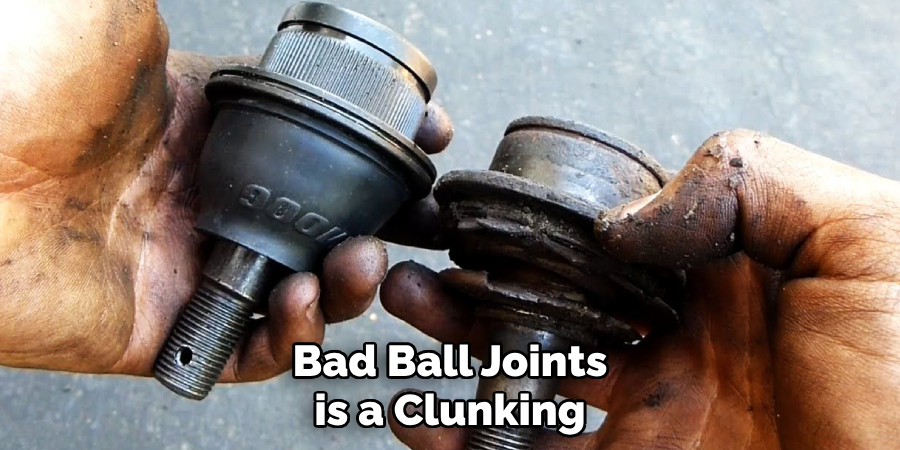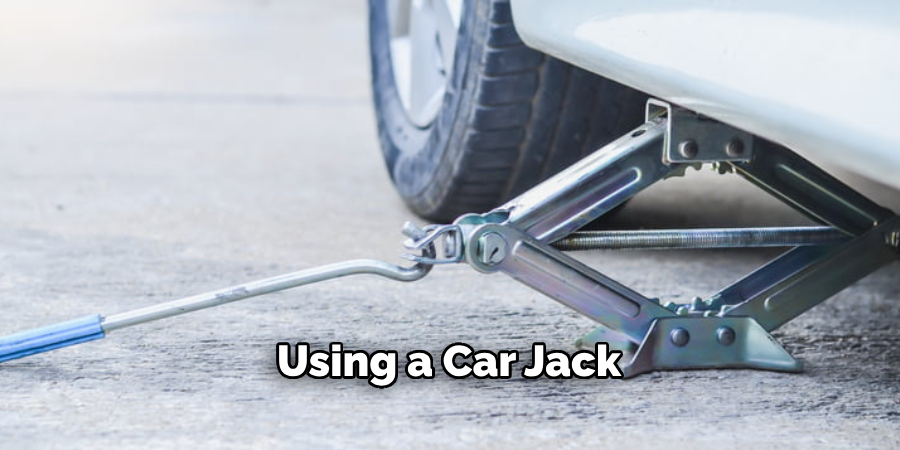The ball joints in your vehicle play a critical role in connecting the steering knuckles to the control arms, allowing for smooth and controlled movement of the wheels. Over time, these components can wear out, leading to potential safety hazards and compromised vehicle performance. In this article, we’ll explore how to know if your ball joints are bad.

From unusual noises like clunking or squeaking to observable issues such as uneven tire wear or steering abnormalities, understanding the red flags can help you identify and address ball joint problems early on.
Ascertaining whether your ball joints are in good condition or require attention is crucial for maintaining optimal driving safety and preventing more extensive and costly damage to your vehicle’s suspension system. Stay informed and proactive by learning how to recognize the telltale signs of failing ball joints before they escalate into more significant issues on the road.
Understanding the Role of Ball Joints
Ball joints play a crucial role in your vehicle’s suspension system. As the connecting points between your car’s wheels and its suspension system, they act as pivots that allow for controlled movement and rotation. These flexible joints allow your wheels to move up and down with the suspension, and also enable the wheels to steer left or right.
When functioning properly, ball joints ensure a smooth and responsive ride. However, when they start to wear out or fail, the performance and safety of your vehicle can be significantly compromised. Thus, knowing how to identify signs of a bad ball joint is vital for maintaining optimal vehicle performance.

Common Symptoms of Bad Ball Joints
If your ball joints are in bad condition, they typically exhibit several noticeable symptoms.
- Unusual Noises: One of the first signs of faulty ball joints is hearing unusual noises from your vehicle’s suspension. This may sound like a clunking or squeaking noise when you go over bumps or make turns.
- Uneven Tire Wear: Another symptom of bad ball joints is uneven tire wear. If you notice that your tires are wearing down unevenly or faster than usual, it could be a sign that the ball joints are not properly aligning the wheels.
- Vibrations: You may feel a vibration from the front of the vehicle, which will intensify as you accelerate. This vibration is caused by the loose ball joint causing the wheel to vibrate.
- Wandering Steering: If the ball joints are worn out, you might notice the steering to be unresponsive or loose, causing the vehicle to wander or drift to the side while driving.
- Visible Damage: In extreme cases, if the ball joints have failed, you may notice visible damage to the joint itself or the rubber boot that protects it.
It’s important to be aware of these symptoms to diagnose and address potential issues with your ball joints early. Always consult with a professional mechanic if you suspect your ball joints may be failing.
10 Methods How to Know if Your Ball Joints Are Bad
1. Listen for Unusual Noises
One of the most common signs of bad ball joints is a clunking or knocking noise coming from the front end of your vehicle. This can occur when turning, going over bumps, or even just driving on a rough road. If you hear these noises, it’s important to get your ball joints checked as soon as possible.

2. Check for Uneven Tire Wear
Another way to tell if your ball joints are bad is by inspecting your tires. If you notice that one or more tires are wearing down faster than the others, it could be a sign that your ball joints are not keeping the wheels aligned properly.
3. Look for Visible Damage
If you have access to the underside of your vehicle, take a look at the ball joints themselves. Look for any signs of physical damage such as cracks, tears, or excessive rust. Any damage to the ball joints can cause them to fail and should be addressed immediately.
4. Pay Attention to Steering Issues
Bad ball joints can also affect your steering and make it difficult to control your vehicle. You may notice that your steering feels loose or that there is excessive play in the wheel when turning. This could indicate that your ball joints are worn out and need to be replaced.
5. Feel for Vibrations
Worn out ball joints can also cause vibrations in the steering wheel or throughout the vehicle while driving. If you feel any unusual vibrations, especially at higher speeds, it could be a sign of bad ball joints.
6. Perform a Bounce Test
To check for worn out ball joints, you can perform a simple bounce test on each corner of your vehicle. Push down on each corner and see how many times it bounces before coming to rest. If it bounces more than two or three times, this could indicate that the ball joint is worn out.

7. Inspect Bushings
Ball joints are attached to control arms with rubber bushings. If these bushings are cracked or worn out, it could affect the performance of the ball joints. Inspect the bushings for any signs of damage and replace them if necessary.
8. Check for Grease Leakage
Ball joints are typically greased to reduce friction and wear. If you notice any grease leaking from the ball joint, it could be a sign that it is failing and needs to be replaced.
9. Test for Wheel Play
You can also check for wheel play by jacking up your vehicle and trying to move the wheels side to side. If there is excessive movement, this could indicate that the ball joints are loose or worn out.
10. Get a Professional Inspection
If you are unsure about the condition of your ball joints, it’s always best to get a professional inspection. A mechanic will be able to thoroughly inspect your ball joints and determine if they need to be replaced or not.
Performing a Road Test
Another effective method to determine if your ball joints are bad is by performing a road test.
- Listen Attentively: Start your vehicle and drive it on a quiet road where you can pay close attention to any noises that come from the front end of your vehicle. Listen out for any clunking or squeaking sounds, particularly when you navigate bumps or potholes. These noises may indicate that your ball joints are worn out.
- Check Steering Response: Pay attention to your vehicle’s steering response. If the vehicle drifts to one side, or if the steering feels loose or unresponsive, it could be a sign of failing ball joints.
- Feel for Vibrations: Notice if there are any unusual vibrations. Worn out ball joints can cause the vehicle to vibrate, especially at higher speeds.
- Observe Wheel Performance: If your vehicle’s ball joints are severely worn, the wheel may begin to wiggle or shake while you’re driving, especially when you accelerate.
Remember, it’s always safer to have your vehicle inspected by a professional if you suspect your ball joints may be failing.
Testing for Play and Movement
Performing a physical check for play and movement in your ball joints can provide strong evidence of their condition. To perform this check, follow these steps:

- Secure the Vehicle: For safety reasons, ensure the vehicle is parked on a flat surface with the parking brake fully engaged.
- Lift the Car: Using a car jack, lift the car until one of the front wheels is off the ground.
- Grip the Tire: Position yourself so that you can firmly grip the tire at the top and bottom.
- Test for Vertical Movement: While holding the tire, try to move it in and out along the vertical axis. If there’s a noticeable play or movement, it’s a clear indication that your ball joints may be worn out.
- Test for Horizontal Movement: Similarly, attempt to move the wheel in and out along the horizontal axis. Excessive play here can also indicate an issue with your ball joints.
- Repeat the Test: Perform the same tests on the other front wheel.
If these tests reveal play and movement in your tires, it’s recommended that you take your car to a professional mechanic for a thorough inspection and possible ball joint replacement.
Conclusion
In conclusion, keeping a close eye on your vehicle’s ball joints is crucial for maintaining safety and preventing potential damage. By understanding the warning signs, such as excessive vibration or strange noises, you can detect any issues with your ball joints early on and prevent them from escalating into more serious problems. Additionally, regular maintenance and inspections can prolong the lifespan of your ball joints and ultimately save you money in the long run.
Remember to always consult with a professional mechanic if you have any concerns or suspicions about your ball joints. Ultimately, being proactive and attentive to your vehicle’s health is key for safe and smooth driving experience. So take the time to educate yourself on how to know if your ball joints are bad, and don’t hesitate to take action when necessary. Your car – and your safety – will thank you for it!
Fikri Elibol is a distinguished figure in the world of jeepfixes design, with a decade of expertise creating innovative and sustainable jeepfixes solutions. His professional focus lies in merging traditional craftsmanship with modern manufacturing techniques, fostering designs that are both practical and environmentally conscious. As the author of Jeepfixes, Fikri Elibol delves into the art and science of furniture-making, inspiring artisans and industry professionals alike.
Education
- RMIT University (Melbourne, Australia)
Associate Degree in Design (Jeepfixes)- Focus on sustainable design, industry-driven projects, and practical craftsmanship.
- Gained hands-on experience with traditional and digital manufacturing tools, such as CAD and CNC software.
- Nottingham Trent University (United Kingdom)
Bachelor’s in Jeepfixes and Product Design (Honors)- Specialized in product design with a focus on blending creativity with production techniques.
- Participated in industry projects, working with companies like John Lewis and Vitsoe to gain real-world insights.
Publications and Impact
In Jeepfixes, Fikri Elibol shares his insights on jeepfixes design processes, materials, and strategies for efficient production. His writing bridges the gap between artisan knowledge and modern industry needs, making it a must-read for both budding designers and seasoned professionals.
